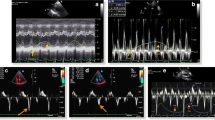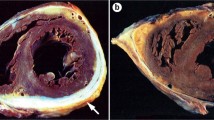Abstract
Transient constrictive pericarditis is increasingly recognized as a distinct sub-type of constrictive pericarditis. The underlying pathophysiology typically relates to impaired pericardial distensibility, associated with acute or sub-acute inflammation, rather than the fibrosis or calcification often seen in chronic pericardial constriction. Accordingly, patients may present clinically with concomitant features of pericarditis and constrictive physiology. Non-invasive multimodality imaging is advocated for diagnosis of transient constrictive pericarditis. Echocardiography remains the mainstay for initial evaluation of the dynamic features of constriction. However, cardiac magnetic resonance imaging can provide complimentary functional information, with the addition of dedicated sequences to assess for active pericardial edema and inflammation. Although transient pericardial constriction can spontaneously resolve, institution of anti-inflammatory therapy may hasten resolution or even prevent progression to chronic pericardial constriction. Non-steroidal anti-inflammatory agents remain the initial treatment of choice, with subsequent consideration of colchicine, steroids, and other immune-modulating agents in more refractory cases.






Similar content being viewed by others
References
Papers of particular interest, published recently, have been highlighted as: • Of importance •• Of major importance
Sagrista-Sauleda J, Permanyer-Miralda G, Candell-Riera J, Angel J, Soler-Soler J. Transient cardiac constriction: an unrecognized pattern of evolution in effusive acute idiopathic pericarditis. Am J Cardiol. 1987;59:961–6.
Adler Y, Charron P, Imazio M, et al. 2015 ESC Guidelines for the diagnosis and management of pericardial diseases: The Task Force for the Diagnosis and Management of Pericardial Diseases of the European Society of Cardiology (ESC) Endorsed by: The European Association for Cardio-Thoracic Surgery (EACTS). Eur Heart J. 2015;36(42):2921–64. Current and comprehensive European Society of Cardiology guidelines for the diagnosis and management of pericardial diseases.
Maeda K, Saito S, Toda T, Ueno T, Kuratani T, Sawa Y. Transient constrictive pericarditis following cardiac surgery. Ann Thorac Cardiovasc Surg. 2014;20(Suppl):897–900.
Feng D, Glockner J, Kim K, et al. Cardiac magnetic resonance imaging pericardial late gadolinium enhancement and elevated inflammatory markers can predict the reversibility of constrictive pericarditis after antiinflammatory medical therapy: a pilot study. Circulation. 2011;124:1830–7. Important paper demonstrating the utility of cardiac magnetic resonance imaging in predicting those with constrictive pericarditis who benefit from anti-inflammatory therapy.
Allaria A, Michelli D, Capelli H, Berri G, Gutierrez D. Transient cardiac constriction following purulent pericarditis. Eur J Pediatr. 1992;151:250–1.
Woods T, Vidarsson B, Mosher D, Stein JH. Transient effusive-constrictive pericarditis due to chemotherapy. Clin Cardiol. 1999;22:316–8.
Haley JH, Tajik AJ, Danielson GK, Schaff HV, Mulvagh SL, Oh JK. Transient constrictive pericarditis: causes and natural history. J Am Coll Cardiol. 2004;43:271–5.
Imazio M, Brucato A, Maestroni S, et al. Risk of constrictive pericarditis after acute pericarditis. Circulation. 2011;124:1270–5.
Taylor AM, Dymarkowski S, Verbeken EK, Bogaert J. Detection of pericardial inflammation with late-enhancement cardiac magnetic resonance imaging: initial results. Eur Radiol. 2006;16:569–74.
Syed FF, Ntsekhe M, Mayosi BM, Oh JK. Effusive-constrictive pericarditis. Heart Fail Rev. 2013;18:277–87.
Talreja DR, Edwards WD, Danielson GK, et al. Constrictive pericarditis in 26 patients with histologically normal pericardial thickness. Circulation. 2003;108:1852–7.
Klein AL, Abbara S, Agler DA, et al. American Society of Echocardiography clinical recommendations for multimodality cardiovascular imaging of patients with pericardial disease: endorsed by the Society for Cardiovascular Magnetic Resonance and Society of Cardiovascular Computed Tomography. J Am Soc Echocardiogr. 2013;26:965–1012 e15. Current recommendations from the American Society of Echocardiography, highlighting the importance of multi-modality imaging in the assessment of pericardial disease.
Ha JW, Oh JK, Ling LH, Nishimura RA, Seward JB, Tajik AJ. Annulus paradoxus: transmitral flow velocity to mitral annular velocity ratio is inversely proportional to pulmonary capillary wedge pressure in patients with constrictive pericarditis. Circulation. 2001;104:976–8.
Reuss CS, Wilansky SM, Lester SJ, et al. Using mitral ‘annulus reversus’ to diagnose constrictive pericarditis. Eur J Echocardiogr. 2009;10:372–5.
Bogaert J, Francone M. Cardiovascular magnetic resonance in pericardial diseases. J Cardiovasc Magn Reson. 2009;11:14.
Cremer PC, Tariq MU, Karwa A et al. Quantitative assessment of pericardial delayed hyperenhancement predicts clinical improvement in patients with constrictive pericarditis treated with anti-inflammatory therapy. Circ Cardiovasc Imaging 2015;8. Recent manuscript presenting novel quantitative methods for assessment of pericardial delayed enhancement by cardiac magnetic resonance imaging.
Imazio M, Brucato A, Cemin R, et al. A randomized trial of colchicine for acute pericarditis. N Engl J Med. 2013;369:1522–8. Important manuscript highlighting the benefit of colchicine use in the setting of acute pericarditis.
Imazio M, Brucato A, Cumetti D, et al. Corticosteroids for recurrent pericarditis: high versus low doses: a nonrandomized observation. Circulation. 2008;118:667–71. Valuable paper addressing the issue of corticosteroid dosing in recurrent pericarditis.
Jain S, Thongprayoon C, Espinosa RE et al. Effectiveness and Safety of Anakinra for Management of Refractory Pericarditis. Am J Cardiol 2015. Recent comprehensive manuscript addressing the benefits and issues related to prescription of anakinra for refractory pericarditis.
Scardapane A, Brucato A, Chiarelli F, Breda L. Efficacy of an interleukin-1beta receptor antagonist (anakinra) in idiopathic recurrent pericarditis. Pediatr Cardiol. 2013;34:1989–91.
Finetti M, Insalaco A, Cantarini L, et al. Long-term efficacy of interleukin-1 receptor antagonist (anakinra) in corticosteroid-dependent and colchicine-resistant recurrent pericarditis. J Pediatr. 2014;164:1425–31. e1.
Baskar S, Klein AL, Zeft A. The use of IL-1 receptor antagonist (Anakinra) in idiopathic recurrent pericarditis: a narrative review. Cardiology Research and Practice. 2016;2016:1–6.
Imazio M, Gaita F, LeWinter M. Evaluation and treatment of pericarditis: a systematic review. JAMA. 2015;314:1498–506.
Author information
Authors and Affiliations
Corresponding author
Ethics declarations
Conflict of Interest
James Gentry, Christine L. Jellis, and Allan L. Klein declare that they have no conflict of interest.
Human and Animal Rights and Informed Consent
This article does not contain any studies with human or animal subjects performed by any of the authors.
Additional information
James Gentry and Allan L. Klein are co-authors
This article is part of the Topical Collection on Pericardial Disease
Rights and permissions
About this article
Cite this article
Gentry, J., Klein, A.L. & Jellis, C.L. Transient Constrictive Pericarditis: Current Diagnostic and Therapeutic Strategies. Curr Cardiol Rep 18, 41 (2016). https://doi.org/10.1007/s11886-016-0720-2
Published:
DOI: https://doi.org/10.1007/s11886-016-0720-2




